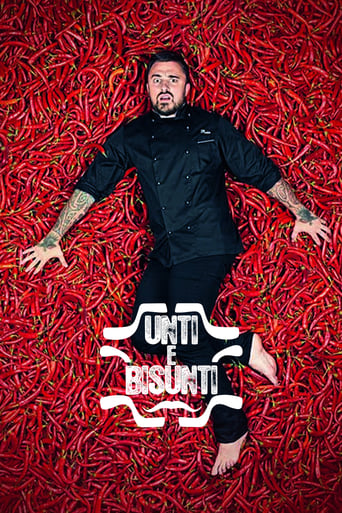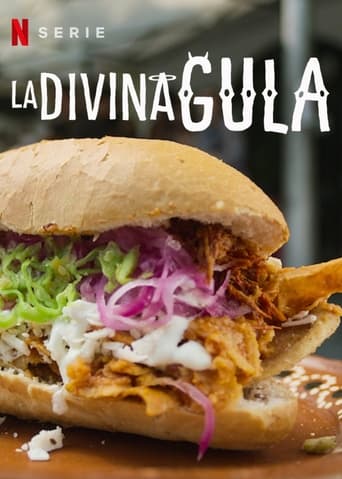
Cinnamon - Kerala
Stevie and Emma visit the southern Indian state of Kerala, where many families grow cinnamon trees in their gardens and use the spice with fish, fruit, curries, and as an offering to the Hindu gods. It is also a key spice in the ancient Ayurvedic system of medicine. Stevie cooks prawn and cinnamon stir-fry. Stevie and Emma join a family of cinnamon peelers and track down one of the region's best home cooks. In Kerala's oldest Auyervedic pharmacy women grind spices with giant pestles and mortars and massive brass vats bubble with potent spice mixes, each infused with cinnamon to help the digestive system. On the menu is braised chicken with preserved lemons; ricotta and cinnamon hotcakes; and a Keralan fish curry.
Country: GB
Language: En
Runtime: 60
Season 1:

In Britain, we think of chillies as hot, but in Mexico they are as varied and complex as wine. Stevie and Emma head to Oaxaca, Mexico, where chillies go back thousands of years and every local is an aficionado. In the vast Abastos market they discover some of the region's 150 different varieties. Whether fresh or dried, fiercely hot or smoky and subtle, each type of chilli from chipotle to habanero has a different role to play in food. Stevie and Emma create a mild chilli fish stew, smoky pulled pork and a chilli chocolate cake with tequila. Their journey takes them to meet chilli farmers who play music to their crops, a Zapotec cook with a recipe handed down from 500BC and a guardian of the nation's best kept culinary secret, mole negro.

Stevie and Emma travel to Zanzibar to rediscover the magic of cloves. They make a mulled wine oxtail stew, and orange, clove and polenta cake, and grilled fish with hot fruit salsa. Cloves were once one of the most expensive commodities on the planet, but these days are often neglected and misunderstood. They find themselves in a cultural melting pot; the Portuguese, Omanis, British and Indians were all involved in the spice trade and each nation had its influence on the architecture and food in Zanzibar. Exploring the alleyways of the old colonial capital, Stonetown, and fishing in crystal clear waters, they discover how locals use cloves. On the island of Pemba they find plantation workers who harvest their crop forty feet in the air in the company of fierce biting ants.

Black pepper is the world's most commonly used - and misunderstood - spice. In a journey through Cambodia, where it is considered the king of spices, Stevie and Emma discover the berries of the pepper vine have much more to offer for cooking at home than people realise. In Phnom Penh's markets they learn how residents of the ex-French colony use black pepper on Gallic-influenced street food. They meet farmers who are re-establishing the champagne of peppers, Kampot, after its destruction by the Khmer Rouge. They spend time with chefs who are regenerating the Cambodian food culture by popularising traditional black pepper dishes lost under the oppressive 70s regime, including a tarantula dish that's a local delicacy. They also witness a ritual in which an expectant mother is fed a diet rich with the spice, showing how black pepper is more than just a condiment but also a symbol of rebirth, regeneration and hope.

In Britain we occasionally sprinkle nutmeg on rice pudding; but in Grenada the spice is so ever-present it features on the national flag. Stevie Parle and Emma Grazette head to the Caribbean island and learn that the country's main export, dubbed 'black gold' by locals, is believed to add more than just flavour to food. Grenadians not only use nutmeg daily in food, it also symbolises national pride, virility and even life itself. They discover that the traditional dishes, oil down and mannish waters, are both infused with nutmeg and served exclusively to men because the spice is believed to have aphrodisiac qualities. They join in as the whole island parties in celebration of Olympic gold medalist Kirani James. And Stevie and Emma create nutmeg roast chicken with squash and spinach; fiery jerk spiced pork; and creamy buttermilk puddings with honey nutmeg peaches.

In Britain, we know cumin as a spice used in curries and kebabs, but in Turkey it flavours everything from pizzas to delicious pistachio and honey-soaked pastries. In Istanbul, Stevie and Emma explore Europe's biggest spice market before discovering new ways to cook with cumin from the city's King of kofta, who also alludes to the legendary magical powers of the spice. Heading east, across the plains of Anatolia, Stevie and Emma join women workers in the cumin harvest under the beating sun and experience the extraordinary hospitality of the local village. Thirty miles from the Syrian border, they discover the spice locally known as black cumin. Also called Nigella in Britain, the Turks consider it a cure-all spice and burn it at home to bless and keep families safe. Inspired by the journey, Stevie and Emma cook Turkish pizza, steak with grilled vegetables and cumin yogurt, and a delicious pistachio, rose and black cumin cake.

Stevie and Emma visit the southern Indian state of Kerala, where many families grow cinnamon trees in their gardens and use the spice with fish, fruit, curries, and as an offering to the Hindu gods. It is also a key spice in the ancient Ayurvedic system of medicine. Stevie cooks prawn and cinnamon stir-fry. Stevie and Emma join a family of cinnamon peelers and track down one of the region's best home cooks. In Kerala's oldest Auyervedic pharmacy women grind spices with giant pestles and mortars and massive brass vats bubble with potent spice mixes, each infused with cinnamon to help the digestive system. On the menu is braised chicken with preserved lemons; ricotta and cinnamon hotcakes; and a Keralan fish curry.




















